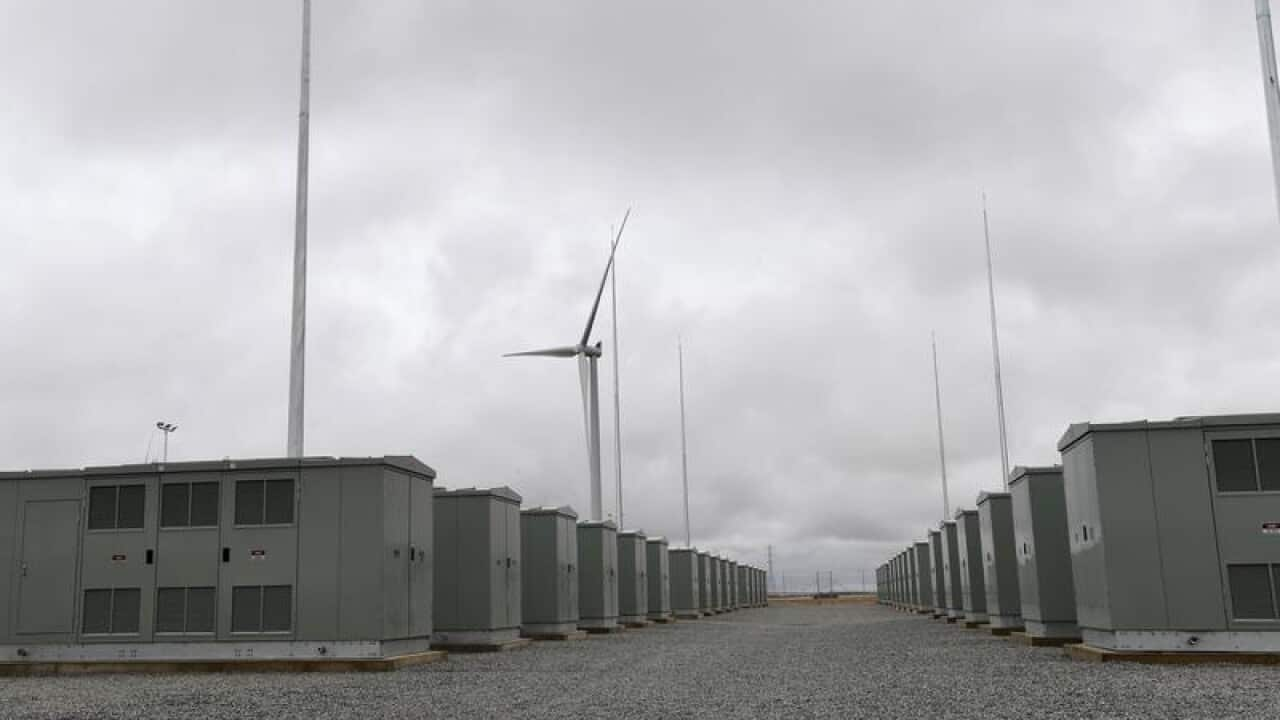It started out as a Twitter wager between two billionaires, but South Australia's big battery has become a key piece of the state's energy infrastructure, firing up thousands of times to help keep the lights on.
One year ago, Tesla owner Elon Musk delivered on his promise to build a functioning battery in 100 days when the world's largest lithium-ion storage system was switched on near Jamestown.
The battery and adjoining wind farm were designed to stabilise the grid and produce clean, safe and consistent renewable energy.
It's known as the Hornsdale Power Reserve and, according to the managing director of Neoen Australia, it's been a stunning success.
"The power reserve has responded thousands of times to frequency outside the normal operating band," Franck Woitiez said.
About 100 of those events were serious, for example, due to the trip of a large coal plant.
"One event was critical, which saw the loss of two transmission lines due to lightning strikes, and resulted in major load shedding in New South Wales and Victoria," Mr Woitiez said.
"The South Australian grid was cut off by the loss from the main grid, however, the state didn't lose power."
In the wake of the 2016 statewide blackout, energy policy became a major point of difference between the then Labor government and its opposition.
Though the battery was built and switched on before the 2018 election, the new Liberal government admits it has gone some way to addressing the state's energy issues.
But Energy Minister Dan van Holst Pellekaan said Labor had failed to sensibly transition to renewable energy, and the new government had broadened its focus.
"The Liberal government understands that renewable energy needs to be paired with storage to protect South Australian consumers from blackouts and skyrocketing prices," he said.
According to the Smart Energy Council, however, the financial performance of the battery has clearly been a success.
Council head John Grimes said, if the battery continued to generate at the level it did in its first six months, it would take taxpayers less than three years to pay it off.
Another measure of success, Mr Grimes said, was the battery's boost for public confidence in renewable energy.
"I think that it's opened people's eyes," he said.
"It's undercut this narrative that when the wind doesn't blow and the sun doesn't shine renewables have no value."
In Mr Musk's memorable Twitter exchange with Australian entrepreneur Mike Cannon-Brookes, he promised to "get the system installed and working 100 days from contract signature or it's free".
He delivered on that front, and, one year after it was switched on, the big battery has proven its worth in helping solve South Australia's energy woes.









